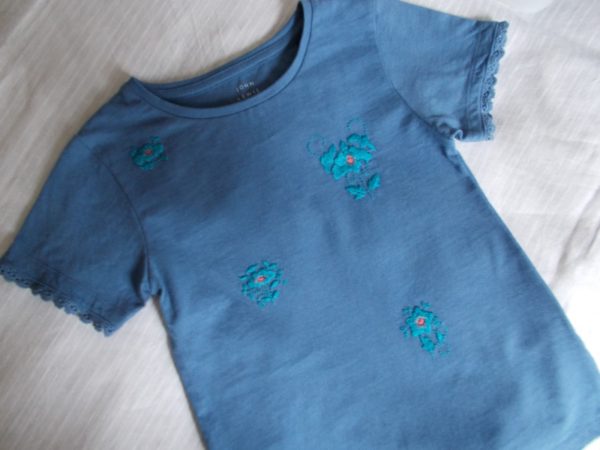
T shirt embroidered with motifs taken from Chinese hair ornaments (hand embroidered by Mary Addison)
A few days spent with family in a cottage on the Owlpen estate was really lovely. I would say magical or dreamlike but both adjectives rob the feeling of the earthy reality of an area where natural stone buildings punctuate a mainly native woodland. The cottage we stayed in was a stone’s throw away from the manor house itself (well, maybe a cricketer’s throw) but the land in between folds and dimples in such a way that existence of a substantial house is unsuspected. Surprisingly for a house whose location would have been both remote and probably once fairly inaccessible, the manor house goes back the the mid C15th. Additions to the property were made in both the C16th and C17th but then the house was abandoned and became uninhabitable, mouldering away behind high yew hedges and enveloped by encroaching deciduous woodland which grows thickly on the embracing rising land behind and around.
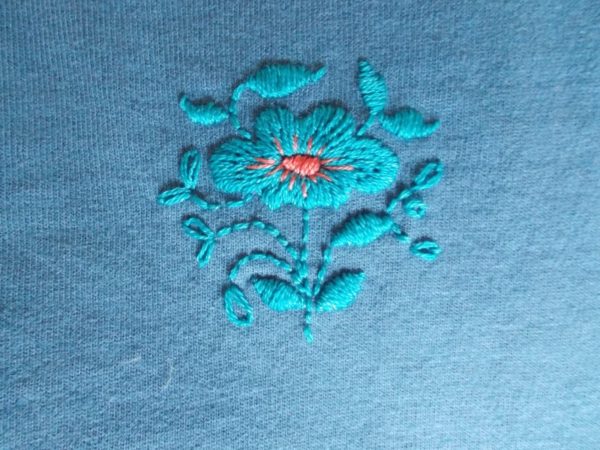
T shirt motif taken from Chinese hair ornaments (hand embroidered by Mary Addison)
The poet Swinburne came upon what remained of the house in the mid C19th and, prince to this sleeping beauty, awakened the world to its charms by sharing his find in a letter to William Morris. Strangely, in spite of Morris founding the Society for the Protection of Ancient Buildings in 1877, the building was not properly restored until the architect Norman Jewson came to its rescue in 1926. It has remained in private hands since and is not itself open to visitors, although you can take a circular walk on the surrounding land and sit on a bench on the hillside opposite, as we did, and admire it from there (see photo below).
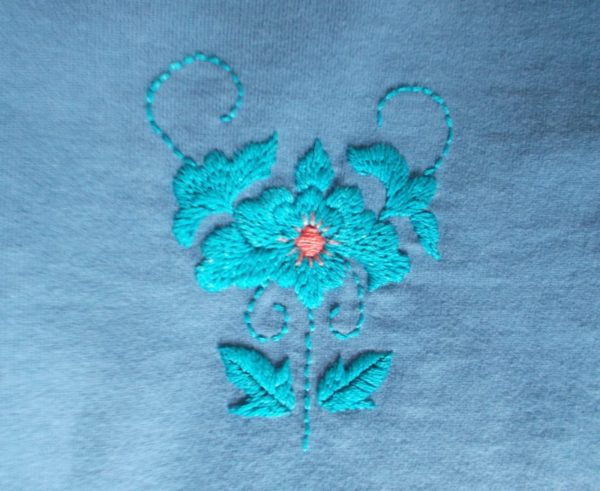
T shirt motif taken from Chinese hair ornaments (hand embroidered by Mary Addison)
Before I saw the house in the flesh, my image of it came via F.L.Griggs’ etching. He drew the house from a path between the yews and to one side and below the house, which gives both the building and yews a looming, precipitate slightly macabre quality that is just about rescued by the sun soaked front of the house in the background. And so it was in real life as you can judge by the photograph we took in the early evening. The yews are more rounded than in the etching but just as dense and dark while the house glows warm, inviting and utterly happy in its perfect, nestled setting.
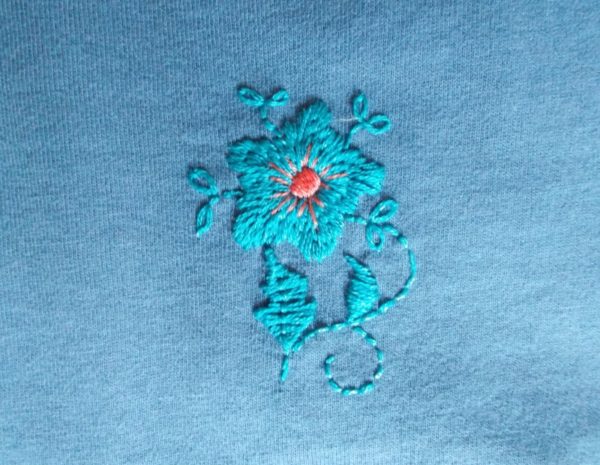
T shirt motif taken from Chinese hair ornaments (hand embroidered by Mary Addison)
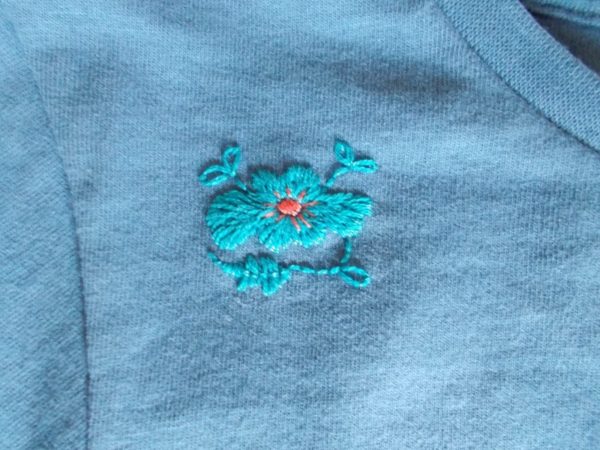
T shirt motif taken from Chinese hair ornaments (hand embroidered by Mary Addison)
Owlpen Manor itself was a rather shy star of the 2017 film, Phantom Thread, starring Daniel Day-Lewis as an eccentric and perfectionist couturier, Reynolds Woodcock. (It is said to be his last film before retirement.) The manor stands in as his country retreat to which he takes his new found love and muse, the initially submissive Alma. As the relationship deepens and becomes more complicated, Alma takes to a delicate degree of poisoning with wild mushrooms (picked in the manor’s woodlands and prepared in the manor’s kitchen) in the hope that she can bind her lover closer to her as she nurtures him back to health. They marry but the couturier’s insecurity and need to dominate reasserts itself, especially as the fashion business is changing and his fashion house is viewed as conservative and old fashioned. Alma, less muse is now more a burden or distraction. She once more resorts to poisoning … (I’ll leave it there, should you wish to watch the film!) It is a strange film and not wholly satisfactory. It is, however, beautifully filmed and acted. Nominated for 6 Academy Awards, it received the 2017 Oscar for best costumes, which are not only terrific in themselves but glorious to see in the making. Vicky Kreips as Alma is mesmerising for her unique, yet almost ordinary sort of loveliness and Lesley Manville, as the couturier’s sister and right hand woman, is as usual excellent in that understated, unspoken way that somehow manages to speak volumes. (Neither description do I find in the least contraditory!)
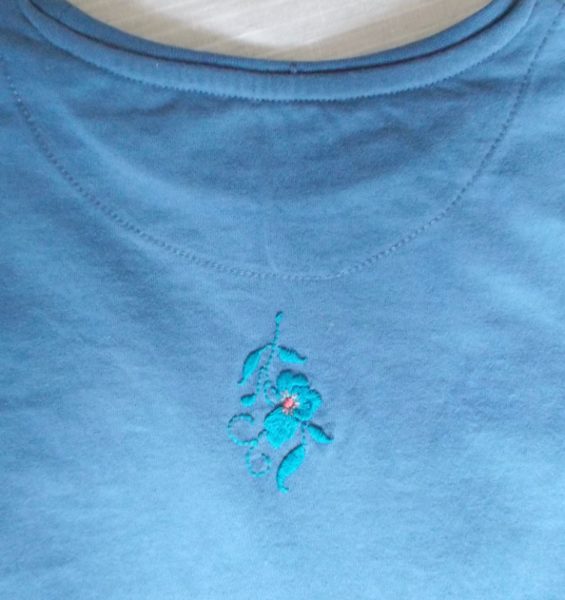
Back of T shirt with motif taken from Chinese hair ornaments (hand embroidered by Mary Addison)
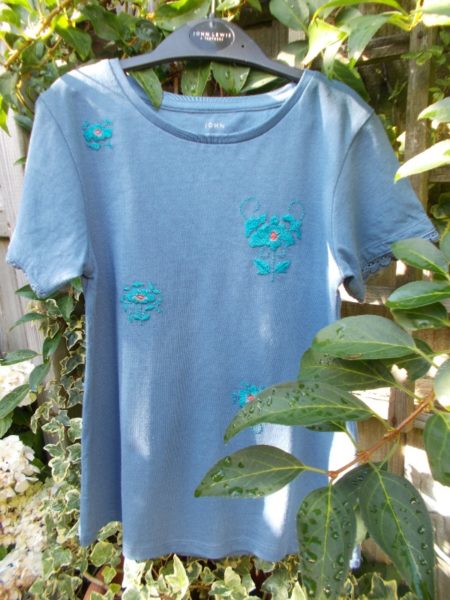
T shirt with motifs taken from Chinese hair ornaments (hand embroidered by Mary Addison)
As I shall be spending more time in London during the weekdays, I’m planning to embroider or appliqué more T shirts. They make ideal presents and fit well in with the time I will have available. This one (and the previous honeysuckle) I made for my husband’s granddaughter whose family we stayed with last week. I had also bought a short sleeved T shirt for her and I’ve been embroidering that this week. (You sometimes have to reconnect with growing children to judge what their taste in clothing might be.)
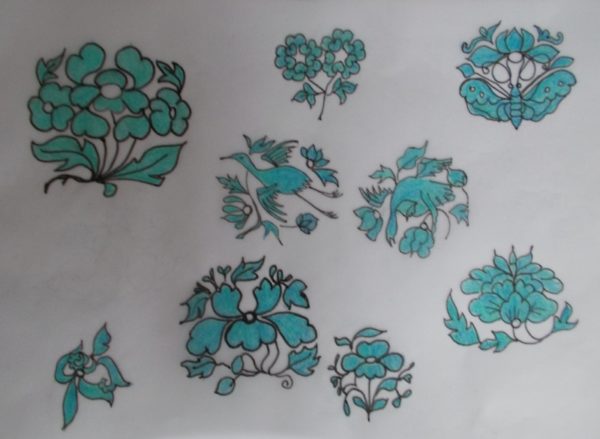
Sketches of motifs taken from Chinese hair ornaments (hand embroidered by Mary Addison)
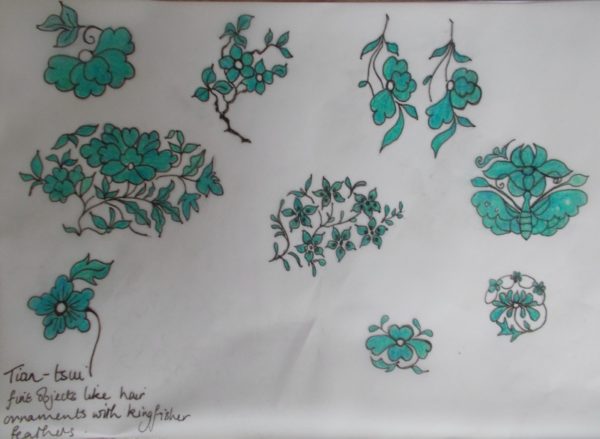
Sketches of motifs taken from Chinese hair ornaments (hand embroidered by Mary Addison)
I love the colour turquoise and have always been fascinated with antique Chinese hair accessories which are almost always in shades of turquoise, darkening to lapis lazuli with the occasional hint of coral. They vary in complexity from single flowers on spindly gold stems to highly baroque convolutions of birds and complex foliage set dancing on fine wire pins. But what I hadn’t realised until I read about these ornaments rather than just looking at images of them is that they aren’t made of turquoise, the stone, at all – or of anything similar – but were crafted out of a completely different medium – feathers and specifically kingfisher feathers. The genre, known as Tian-tsu has a lot to offer to anyone looking for embroidery inspiration, and although I usually like to use lots of brightly coloured threads, I’m completely won over by the use of so wonderful a single colour . So much did I enjoy the turquoise that I couldn’t resist colouring in the sketches – it was just a bit maddening that the three bluish-green pencils I used to get somewhere near the desired colour broke so often and now only little stubs of the pencils remain. (Do modern pencils break more often?)
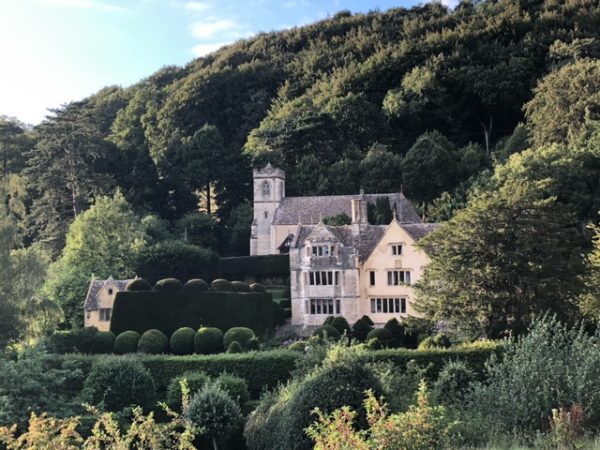
Owlpen Manor, Gloucestershire, England

3 Comments
Owlpen looks enchanting!
I agree about turquoise – it is one of those magic colours, that shifts and changes even as you look at it.
Perhaps that’s one reason why you like Eyptian art so much. Their turquoise colouring, so alluring and unique, is probably the first man made pigment in known history whose recipe, long since lost, has only recently been revealed as a result of chemical analysis. A truly great colour!
You could have a point! It’s one of the best known faience colours, after all!
One Trackback
[…] summer I embroidered a T shirt for my husband’s granddaughter with turquoise flowers motifs borrowed from Chinese hai…. I love the effect of turquoise on navy and as I wear a lot of navy, it was only a matter of time […]